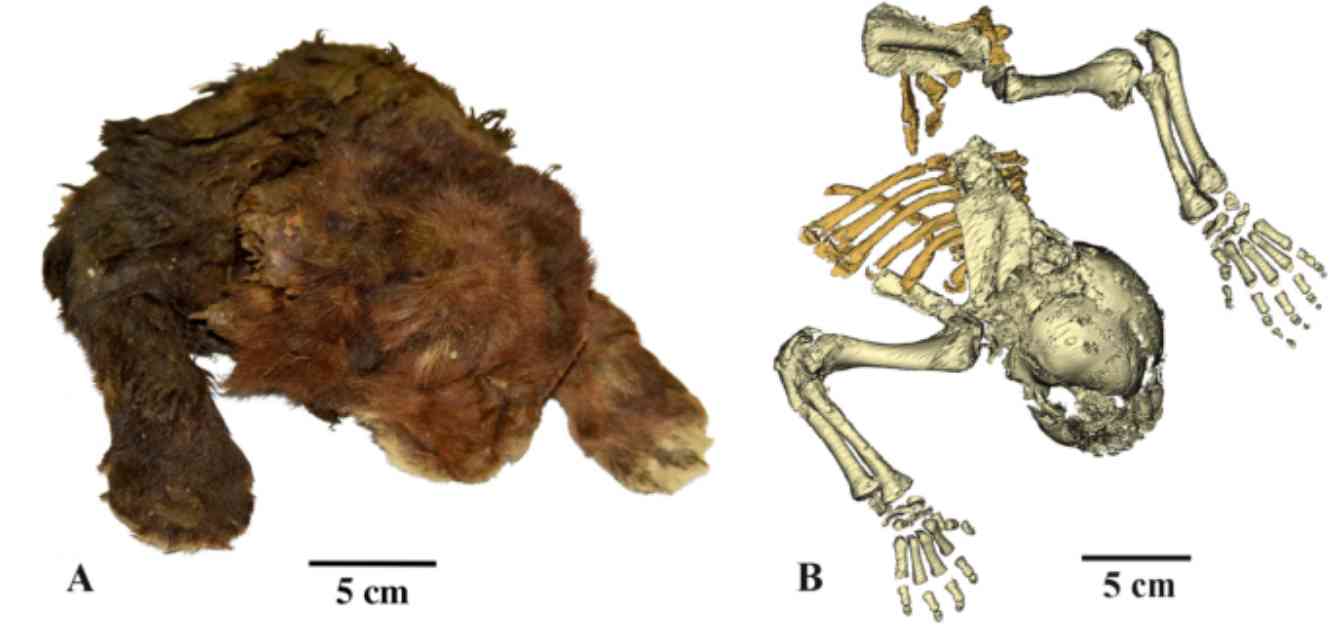In 2020, a remarkable discovery was made in the Abyisky ulus of the Republic of Sakha (Yakutia) where a mummified carcass of a large carnivore cub was found. This discovery took place in the Badyarikhskoe locality along the Badyarikha River in the Yana-Indigirka Lowland, known for its collection of mammoth fauna bones from the Yedoma horizon.
Radiocarbon dating of the mummified cub, based on wool, revealed an age of 31,808 ± 367 years BP. This was calibrated using the Intcal20 curve in the OxCal 4.4 program to 35,471–37,019 years cal BP. Such findings of frozen mummified remains from the Late Pleistocene are extremely rare, with most discoveries in Russia concentrated in the Indigirka River basin.
The mummy, stored at the Department for the Study of Mammoth Fauna in Yakutsk, includes the head and front part of the body preserved up to the chest, along with pelvic bones. Comparative analysis was carried out using a lion cub specimen for reference. The study focused on cranial and dental features to determine the taxonomic position of the mummy.
The morphology of the mummy revealed distinct characteristics of the Homotherium genus, such as a pronounced mandibular flange, short coronoid process, and elevated incisors relative to cheek teeth. The skull length and width of the mummy exceeded those of a juvenile lion specimen. The ear shape, nasal bones, and infraorbital foramen of the mummy demonstrated unique features compared to lions.
Notably, the mummy exhibited adaptations to cold climates, with its fur, paw shape, and muscle distribution reflecting an environment suited for snowy conditions. The forelimbs of the Homotherium cub were significantly larger than those of lion cubs, indicating early postnatal ontogenetic development.
This discovery sheds new light on the appearance and adaptations of Homotherium latidens, a saber-toothed cat, during the Late Pleistocene. The study expands the understanding of the geographical distribution of this species and provides insights into its life history and ecological niche. Through detailed morphological analysis, researchers were able to reconstruct the external features of this extinct predator, offering a glimpse into the past of the Pleistocene fauna.













